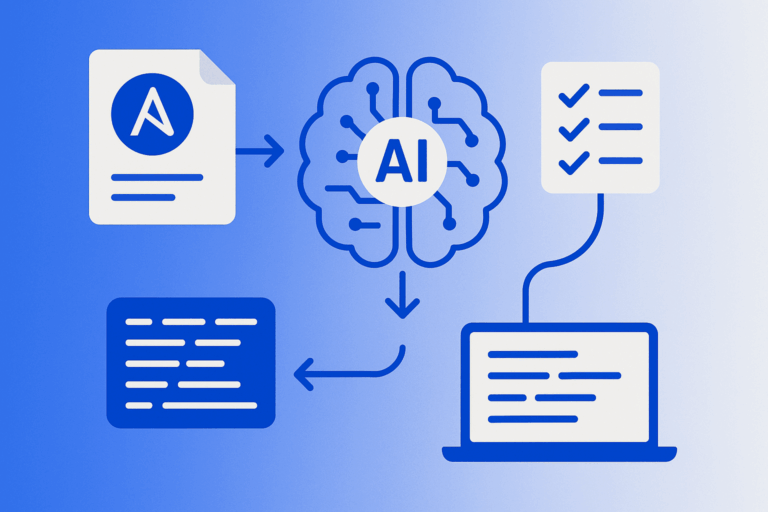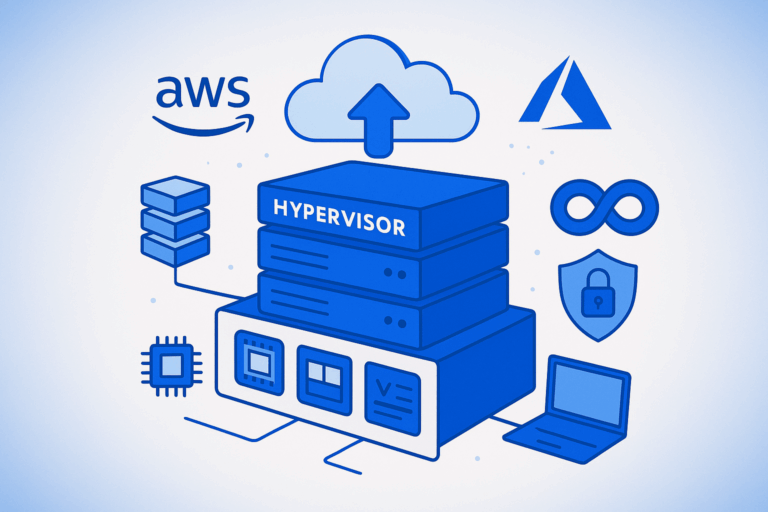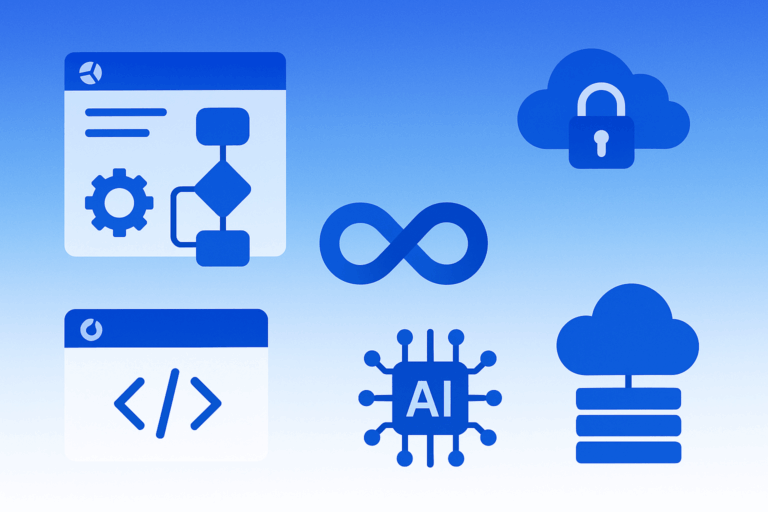HIPAA Compliance: Why It’s Required and How to Secure Your Healthcare Data

Introduction: Understanding HIPAA Compliance in Today’s Digital Healthcare Landscape🔒
HIPAA compliance has become the cornerstone of healthcare data security in our increasingly digital world. As healthcare organizations migrate to cloud platforms like AWS Cloud and Azure Cloud, the need for robust compliance frameworks has never been more critical. With over 176 million patients affected by protected health information (PHI) breaches, understanding HIPAA requirements isn’t just about legal obligation—it’s about protecting lives and maintaining trust.
Modern DevOps Engineers and Cloud Technology specialists must integrate HIPAA compliance into every aspect of healthcare infrastructure. This comprehensive guide explores why HIPAA compliance is essential and how to implement secure solutions using cutting-edge AI and cloud technologies.
What is HIPAA and Why Was It Established? 📋
The Health Insurance Portability and Accountability Act (HIPAA) was enacted in 1996 to safeguard patient privacy and secure health information. This landmark legislation established federal standards to ensure the security of electronic protected health information (ePHI).
Key HIPAA Objectives:
- Portability: Ensures health insurance coverage continuity when changing jobs
- Privacy Protection: Safeguards individually identifiable health information
- Security Standards: Establishes technical safeguards for electronic health data
- Administrative Simplification: Standardizes healthcare transactions and code sets
- Fraud Prevention: Reduces healthcare fraud and abuse

The Five Titles of HIPAA: A Complete Breakdown 🏛️
| Title | Focus Area | Key Requirements |
|---|---|---|
| Title I | Healthcare Access & Portability | Group/individual insurance policies, renewability standards |
| Title II | Administrative Simplification | Privacy Rule, Security Rule, Breach Notification Rule |
| Title III | Tax-Related Health Provisions | Medical savings accounts regulations |
| Title IV | Group Health Insurance | Application and enforcement requirements |
| Title V | Revenue Offsets | Tax deductions for employers |
Title II is most relevant for IT professionals, containing the crucial Privacy and Security Rules that govern healthcare data protection.
HIPAA Privacy Rule: Protecting Patient Information 🛡️
The Privacy Rule governs how “covered entities” use and disclose PHI. Understanding this rule is essential for DevOps teams implementing healthcare solutions.
Covered Entities Include:
- Healthcare clearinghouses
- Health insurers and employer-sponsored plans
- Medical providers conducting electronic transactions
- Business associates handling PHI
Key Privacy Rule Requirements:
Patient Access Rights:
- Patients must receive PHI copies within 30 days of request
- Electronic delivery options must be available
- Reasonable copying fees may apply (no charge for certified EHR data)
Minimum Necessary Standard:
- Only access PHI required for specific job functions
- Implement role-based access controls
- Regular access reviews and audits
Example Privacy Rule Implementation:
# Example: Role-based access control for healthcare applications
class PHIAccessControl:
def __init__(self):
self.roles = {
'physician': ['read', 'write', 'update'],
'nurse': ['read', 'update'],
'admin': ['read'],
'patient': ['read_own']
}
def check_access(self, user_role, action, patient_id, user_id):
if user_role not in self.roles:
return False
if action not in self.roles[user_role]:
return False
# Patients can only access their own records
if user_role == 'patient' and patient_id != user_id:
return False
return TrueHIPAA Security Rule: Technical Safeguards for the Digital Age 💻
The Security Rule specifically addresses ePHI protection through three types of safeguards that Cloud Technology professionals must implement.

Administrative Safeguards
Security Officer Requirements:
- Designate a HIPAA security officer with IT background
- Document security policies and procedures
- Conduct regular risk assessments
- Implement employee training programs
Workforce Training Components:
- Annual HIPAA training for all employees
- Role-specific access training
- Incident response procedures
- Regular policy updates
Physical Safeguards
Infrastructure Security:
- Secure server rooms with controlled access
- Workstation positioning away from public view
- Equipment disposal procedures
- Media transport protocols
Example Physical Security Checklist:
- [ ] Install locks on computer rooms
- [ ] Position monitors away from public areas
- [ ] Implement clean desk policies
- [ ] Secure printer and fax machine locations
- [ ] Establish equipment disposal procedures
Technical Safeguards
Technical safeguards are where DevOps Engineers and AI specialists play crucial roles in HIPAA compliance.
Access Control Requirements:
- Unique user identification systems
- Multi-factor authentication
- Automatic session timeouts
- Role-based permissions
Data Integrity Measures:
- Checksums for data validation
- Digital signatures for authentication
- Message authentication protocols
- Audit logs for all PHI access
Terraform Example for HIPAA-Compliant AWS Infrastructure:
# terraform/hipaa-compliant-infrastructure.tf
resource "aws_s3_bucket" "phi_storage" {
bucket = "hipaa-compliant-phi-storage"
tags = {
Environment = "production"
Compliance = "HIPAA"
}
}
resource "aws_s3_bucket_encryption" "phi_encryption" {
bucket = aws_s3_bucket.phi_storage.id
server_side_encryption_configuration {
rule {
apply_server_side_encryption_by_default {
sse_algorithm = "aws:kms"
kms_master_key_id = aws_kms_key.phi_key.arn
}
}
}
}
resource "aws_s3_bucket_logging" "phi_logging" {
bucket = aws_s3_bucket.phi_storage.id
target_bucket = aws_s3_bucket.audit_logs.id
target_prefix = "phi-access-logs/"
}
resource "aws_kms_key" "phi_key" {
description = "KMS key for PHI encryption"
deletion_window_in_days = 7
tags = {
Purpose = "PHI-Encryption"
}
}Cloud Implementation Strategies for HIPAA Compliance ☁️
AWS Cloud HIPAA Implementation
AWS HIPAA Eligible Services:
- Amazon EC2 with encrypted EBS volumes
- Amazon S3 with server-side encryption
- Amazon RDS with encryption at rest
- AWS Lambda for serverless computing
- Amazon CloudTrail for audit logging
Azure Cloud HIPAA Implementation
Azure HIPAA Compliance Features:
- Azure Security Center for threat protection
- Azure Key Vault for encryption key management
- Azure Monitor for comprehensive logging
- Azure Active Directory for identity management
Multi-Cloud DevOps Strategy:
# Example DevOps pipeline configuration for HIPAA compliance
apiVersion: v1
kind: ConfigMap
metadata:
name: hipaa-deployment-config
data:
security_scanning: "enabled"
encryption_required: "true"
audit_logging: "comprehensive"
access_controls: "rbac-enabled"
---
apiVersion: apps/v1
kind: Deployment
metadata:
name: hipaa-compliant-app
spec:
replicas: 3
selector:
matchLabels:
app: healthcare-app
template:
spec:
securityContext:
runAsNonRoot: true
fsGroup: 2000
containers:
- name: app
image: healthcare-app:secure
securityContext:
allowPrivilegeEscalation: false
readOnlyRootFilesystem: true
env:
- name: ENCRYPTION_ENABLED
value: "true"
- name: AUDIT_LOGGING
value: "enabled"AI and Machine Learning in HIPAA-Compliant Environments 🤖
AI technologies can enhance HIPAA compliance while providing valuable healthcare insights:
AI-Powered Security Features:
- Anomaly Detection: Identify unusual PHI access patterns
- Automated Risk Assessment: Continuous compliance monitoring
- Intelligent Data Classification: Automatic PHI identification
- Predictive Threat Analysis: Proactive security measures
Example AI Implementation for HIPAA Compliance:
import tensorflow as tf
from sklearn.ensemble import IsolationForest
import pandas as pd
class HIPAAAIMonitor:
def __init__(self):
self.anomaly_detector = IsolationForest(contamination=0.1)
self.trained = False
def train_baseline(self, normal_access_patterns):
"""Train AI model on normal PHI access patterns"""
features = self.extract_features(normal_access_patterns)
self.anomaly_detector.fit(features)
self.trained = True
def detect_suspicious_access(self, access_log):
"""Detect potentially suspicious PHI access"""
if not self.trained:
raise ValueError("Model must be trained first")
features = self.extract_features([access_log])
anomaly_score = self.anomaly_detector.decision_function(features)
if anomaly_score < -0.5: # Threshold for suspicious activity
return {
'suspicious': True,
'confidence': abs(anomaly_score[0]),
'recommended_action': 'immediate_investigation'
}
return {'suspicious': False}
def extract_features(self, access_logs):
"""Extract relevant features for anomaly detection"""
# Implementation would extract features like:
# - Time of access, User role, Data volume accessed
# - Geographic location, Device type, etc.
passHIPAA Violations and Penalties: Real-World Consequences ⚖️
Understanding HIPAA penalties motivates proper implementation:
Civil Penalties Structure:
| Violation Type | Per Incident | Annual Maximum |
|---|---|---|
| Reasonable cause, not willful neglect | $1,000 | $100,000 |
| Willful neglect, corrected | $10,000 | $250,000 |
| Willful neglect, not corrected | $50,000 | $1,500,000 |
Criminal Penalties:
- Knowing disclosure: Up to $50,000 fine, 1 year imprisonment
- Commercial gain/malicious harm: Up to $250,000 fine, 10 years imprisonment
Common Violation Examples:
- Accessing celebrity medical records (terminated surgeon, $2,000 fine, 4 months jail)
- Unsecured laptop theft containing PHI
- Improper email transmission of patient data
- Inadequate access controls on medical devices
Best Practices for HIPAA Compliance Implementation 🎯
DevOps Best Practices:
Infrastructure as Code (IaC):
- Use Terraform for consistent, compliant deployments
- Version control all infrastructure configurations
- Implement automated compliance testing
- Document all security configurations
Continuous Integration/Continuous Deployment (CI/CD):
- Integrate security scanning in deployment pipelines
- Automated vulnerability assessments
- Compliance validation gates
- Regular penetration testing
Security Implementation Checklist:
Access Controls:
- [ ] Multi-factor authentication implemented
- [ ] Role-based access controls configured
- [ ] Regular access reviews scheduled
- [ ] Password policies enforced
Data Protection:
- [ ] Encryption at rest implemented
- [ ] Encryption in transit configured
- [ ] Key management system deployed
- [ ] Data backup and recovery tested
Monitoring and Auditing:
- [ ] Comprehensive audit logging enabled
- [ ] Real-time monitoring configured
- [ ] Incident response procedures documented
- [ ] Regular compliance assessments scheduled
Business Associate Agreements and Cloud Providers 🤝
When using cloud services, Business Associate Agreements (BAAs) are mandatory:
BAA Requirements:
- Written agreement between covered entity and business associate
- Defines permitted uses and disclosures of PHI
- Requires appropriate safeguards implementation
- Mandates breach notification procedures
- Includes termination clauses for violations
Major Cloud Provider BAA Support:
AWS: Comprehensive BAA coverage for eligible services
Azure: Microsoft Customer Agreement includes HIPAA provisions
Google Cloud: Healthcare API with built-in HIPAA compliance features
Risk Assessment and Management Framework 📊
HIPAA Risk Assessment Process:
- Asset Inventory
- Identify all systems handling PHI
- Document data flows and storage locations
- Catalog all third-party integrations
- Vulnerability Assessment
- Technical security testing
- Physical security evaluation
- Administrative process review
- Threat Analysis
- Internal threat assessment
- External threat landscape review
- Business associate risk evaluation
- Impact Analysis
- Potential breach consequences
- Business continuity implications
- Regulatory penalty exposure
Risk Assessment Matrix:
| Risk Level | Probability | Impact | Action Required |
|---|---|---|---|
| Critical | High | High | Immediate remediation |
| High | High | Medium | 30-day remediation |
| Medium | Medium | Medium | 90-day remediation |
| Low | Low | Low | Monitor and review |
Incident Response and Breach Notification 🚨
HIPAA Breach Notification Timeline:
Discovery to Assessment: 60 days to determine if breach occurred
Patient Notification: 60 days from breach discovery
HHS Notification: 60 days for breaches affecting <500 individuals
Media Notification: Concurrent with patient notification for large breaches
Example Incident Response Workflow:
class HIPAAIncidentResponse:
def __init__(self):
self.notification_timeline = {
'discovery': 0,
'assessment_complete': 5, # days
'patient_notification': 60, # days
'hhs_notification': 60 # days
}
def handle_potential_breach(self, incident_data):
"""Process potential HIPAA breach incident"""
# Step 1: Immediate containment
containment_actions = self.contain_incident(incident_data)
# Step 2: Assessment
is_breach = self.assess_breach_criteria(incident_data)
if is_breach:
# Step 3: Notification requirements
self.initiate_notification_process(incident_data)
# Step 4: Documentation
return self.document_incident(incident_data, is_breach)
def assess_breach_criteria(self, incident_data):
"""Determine if incident constitutes a breach under HIPAA"""
# Analyze based on 4-factor test:
# 1. Nature and extent of PHI involved
# 2. Unauthorized person who used/disclosed PHI
# 3. Whether PHI was actually acquired/viewed
# 4. Extent to which risk has been mitigated
pass
Why choose Devolity
Unmatched Expertise in
Cloud and Cybersecurity
Devolity team of certified professionals brings decades of combined experience in managing complex cloud environments and defending against evolving cyber threats.
01
End-to-End Solutions for Every Business Need
DevOps with Cybersecurity Services: Hybrid/multi-cloud management, cost optimization, and DevOps integration with Risk assessments.
02
Customized Strategies, Not One-Size-Fits-All
We understand every business is unique. Devolity prioritizes collaboration, crafting bespoke solutions aligned with your industry, goals, and risk profile.
03
Proactive Protection with 24/7 Vigilance
Cyber threats never sleep—and neither do we. Devolity Security Operations Center (SOC) offers round-the-clock monitoring, rapid incident response.
Future-Proofing HIPAA Compliance with Emerging Technologies 🔮
Blockchain for Healthcare:
Benefits:
- Immutable audit trails
- Decentralized access controls
- Enhanced data integrity
- Patient-controlled consent management
IoT and Medical Devices:
Challenges:
- Device authentication and authorization
- End-to-end encryption requirements
- Regular security updates and patches
- Network segmentation strategies
Quantum Computing Implications:
Preparation Strategies:
- Quantum-resistant encryption algorithms
- Enhanced key management systems
- Advanced threat detection capabilities
- Future-proof security architectures
How Devolity Business Solutions Optimizes Your Cloud HIPAA Compliance 🚀
At Devolity Business Solutions, we specialize in transforming healthcare organizations’ cloud infrastructure while maintaining strict HIPAA compliance. Our expert DevOps Engineers leverage cutting-edge Terraform automation and AI-powered security monitoring across AWS Cloud and Azure Cloud platforms.
Our comprehensive approach includes:
- Automated Compliance Monitoring: AI-driven systems that continuously assess your Cloud Technology infrastructure for HIPAA compliance gaps
- Infrastructure as Code: Terraform-based solutions ensuring consistent, auditable deployments across multi-cloud environments
- DevOps Integration: Seamless CI/CD pipelines with built-in security scanning and compliance validation
- 24/7 Security Operations: Advanced threat detection and incident response specifically designed for healthcare environments
Partner with Devolity to transform your healthcare infrastructure into a secure, compliant, and efficiently managed cloud ecosystem that scales with your organization’s growth while maintaining the highest standards of patient data protection.
Conclusion: Building a Secure Healthcare Future 🌟
HIPAA compliance isn’t just a regulatory requirement—it’s a commitment to protecting patient privacy and maintaining healthcare system integrity. As Cloud Technology continues evolving, organizations must adapt their compliance strategies to leverage modern tools like AI, DevOps automation, and advanced cloud platforms.
Success in HIPAA compliance requires:
- Comprehensive understanding of regulatory requirements
- Technical expertise in secure cloud implementations
- Continuous monitoring and improvement processes
- Regular training and education programs
- Proactive risk management strategies
By implementing robust security frameworks, leveraging automation tools like Terraform, and partnering with experienced DevOps Engineers, healthcare organizations can achieve both regulatory compliance and operational excellence.
The future of healthcare depends on our ability to balance innovation with security, ensuring patient data remains protected while enabling the technological advances that improve patient care. With proper planning, implementation, and ongoing management, HIPAA compliance becomes not just achievable, but a competitive advantage in the modern healthcare landscape.
Ready to enhance your HIPAA compliance strategy? Contact our expert team to discover how modern Cloud Technology and DevOps practices can transform your healthcare infrastructure while maintaining the highest security standards. 📞
Related Resources:
- AWS HIPAA Compliance Guide
- Azure Healthcare Cloud Solutions
- Terraform Healthcare Infrastructure Templates
- HIPAA Security Risk Assessment Tools
- DevOps Security Best Practices for Healthcare
Stay compliant, stay secure, and keep innovating in healthcare technology. 💙
Transform Business with Cloud
Devolity simplifies state management with automation, strong security, and detailed auditing.







